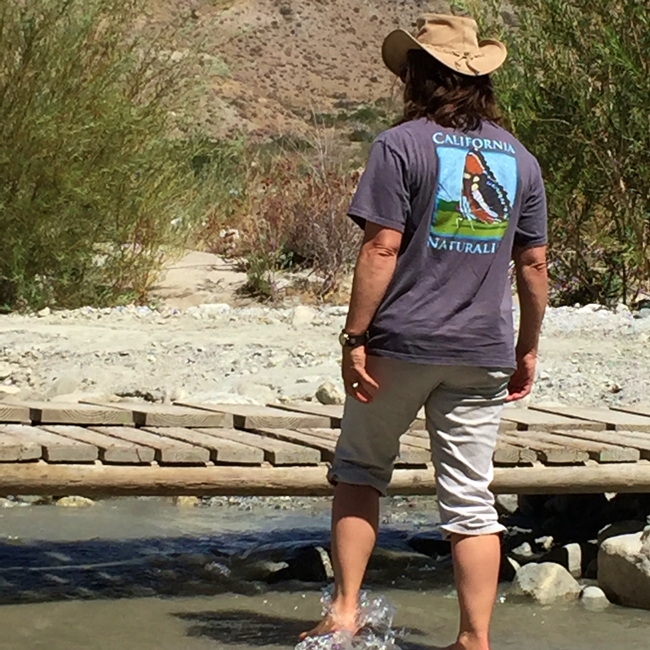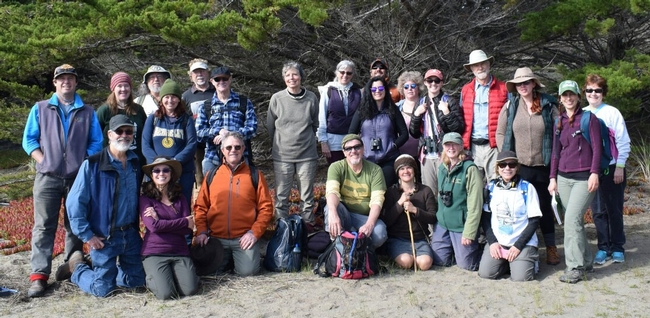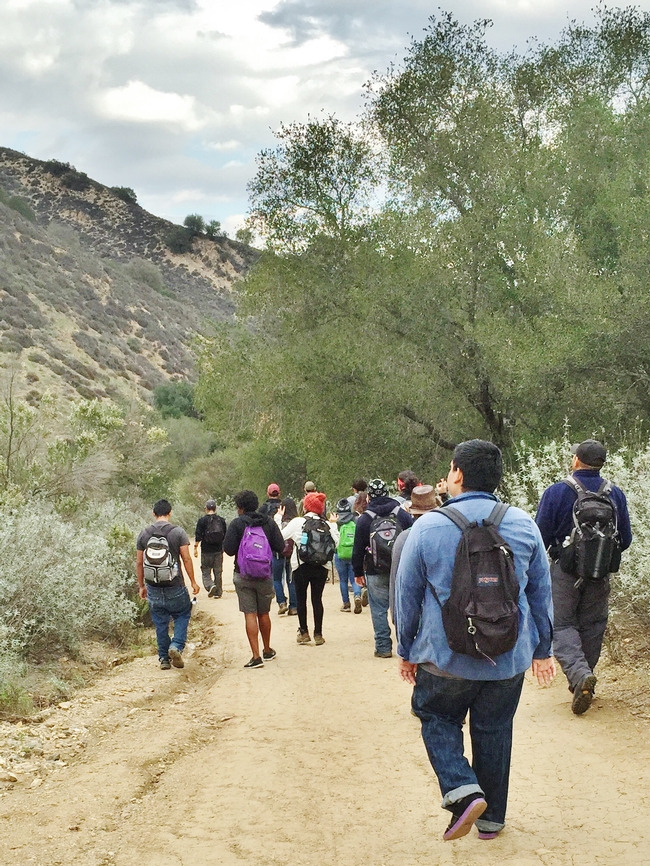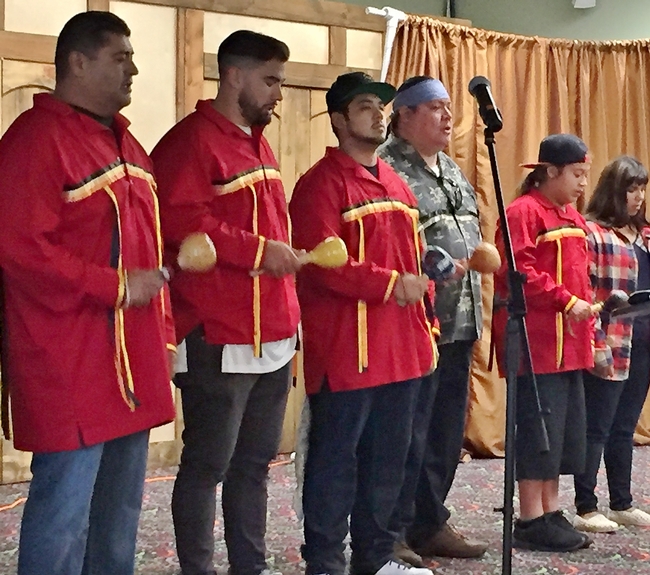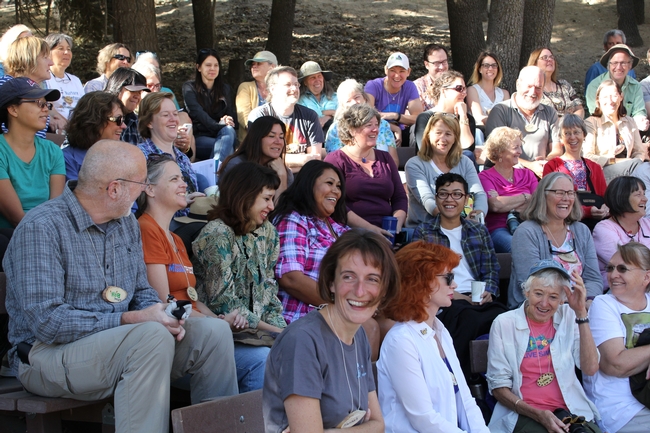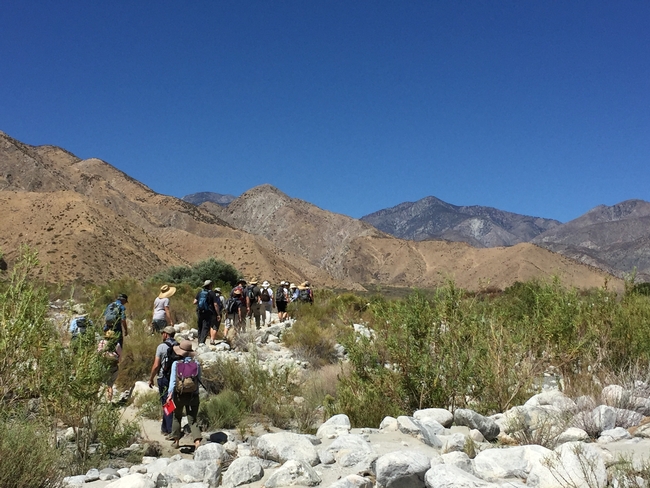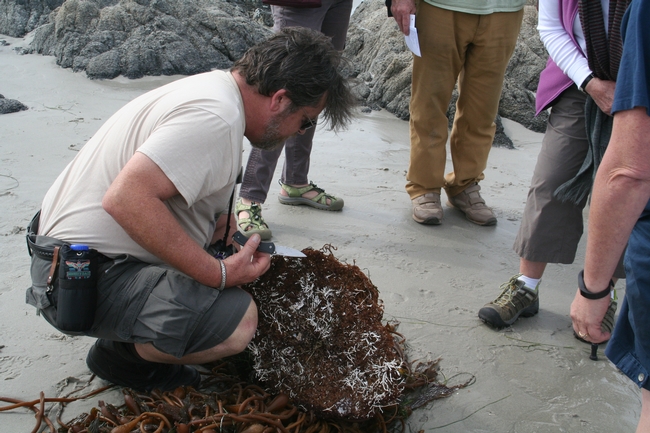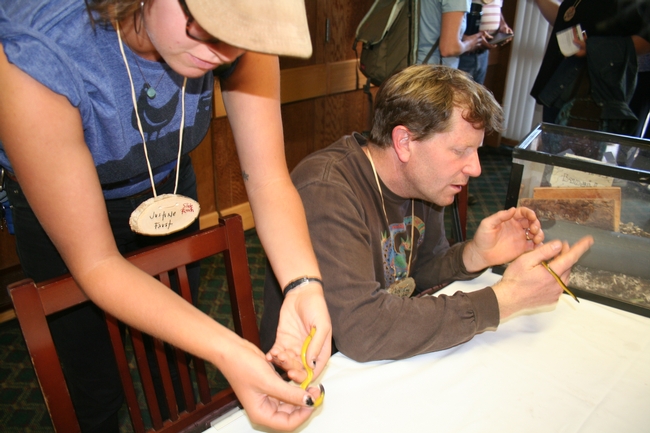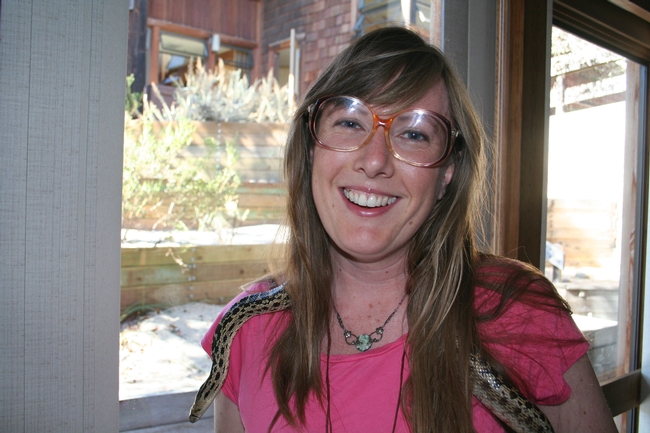Posts Tagged: Adina Merenlender
Celebrating the 100th California Naturalist class
How did we get here and where shall we venture together?
This spring, the 100th California Naturalist class is being offered in Sonoma County – the very same county where we first piloted the curriculum. The UC Agriculture and Natural Resources California Naturalist Program is designed to introduce Californians to the wonders of our unique ecology and engage the public in study and stewardship of California's natural communities. The program mission is to foster a diverse community of naturalists and promote stewardship of California's natural resources through education and service. California Naturalist certification courses combine classroom and field experience in science, problem-solving, communication training and community service. Students are taught by an instructor and team of experts who are affiliated with the University of California, local nature-based centers, community colleges, land trusts, or natural resource focused agencies such as California State Parks and cooperating “friends groups.”
What inspired the first California Naturalist class? Georgia, Florida, Texas and 22 other states have Master Naturalist-like programs, so why not California? After all, California is a global biodiversity hotspot filled with nature enthusiasts. It took a volunteer, Julia Fetherston, to get excited about the potential for a California program before our director Adina Merenlender was convinced to attend the 2005 National Master Naturalist Annual Conference in Estes Park, Colo. She was impressed with the impact these programs were having and decided to see what we could do in the Golden State. A good deal of effort followed to advance the cause within UC, secure grant funding, write the California Naturalist Handbook, develop ways to work with organizations across the state, and build a team to run California Naturalist. In 2012, we officially launched the program with five intrepid institutional partners (Santa Rosa Junior College/Pepperwood Foundation, Pacific Grove Museum of Natural History, UC Santa Cruz Arboretum, UC Berkeley Sagehen Creek Field Station, and Santa Barbara Botanical Garden). Four years later California Naturalist received Program of the Year from the national network, the Alliance of Natural Resource Outreach and Service Programs.
The 100th California Naturalist class is being offered at Stewards of the Coast and Redwood this spring. Stewards of the Coast and Redwoods is a non-profit, environmental and interpretive organization that works in partnership with California State Parks in the Russian River Sector of the Sonoma Mendocino Coast District to support volunteer, education and stewardship programs. Participants in this year's spring class have worked hard on a wide range of capstone projects, including multiple wildlife monitoring citizen science projects, improving fish habitat in the watershed, and creating educational materials on ticks, wetland birds, water quality and more. Co-instructors Meghan Walla-Murphy and David Berman have been teaching California Naturalist courses since 2013, first with Occidental Arts and Ecology Center and now with Stewards. Meghan is the author of Fishing on the Russian River and a well-respected wildlife tracker whose workshops are not to be missed. David is an extraordinary environmental educator, watershed expert, and Project Wild facilitator with the Sonoma County Water Agency.
Now that we have 100 classes under our belt, oh, the places we can go! California Naturalist is a community of practice started deliberately with the goal of gaining natural history knowledge. We are working on releasing a citizen science challenge to provide an opportunity for California Naturalists to discover more about California's ecosystems - Discovery!
Surveys show that California Naturalists feel more empowered to address environmental challenges after their training and knowing they can lean on their fellow naturalists. We would like to know more about how California Naturalists are participating in civic engagement. With a new volunteer management system on the horizon, we plan to learn more about the many ways Naturalists are becoming involved in issues that affect their communities. - Action!
In particular, what activities are Naturalists doing that will help communities and natural ecosystems be more resilient to climate change – improving habitat connectivity, restoring riparian areas, or pre/post fire management? We are looking for support to start an advanced training aimed at helping today's climate stewards learn more about climate science and adaptation to support their efforts on climate-wise - Stewardship!
Congratulations to the graduates of the 100th California Naturalist class and all those who went before you.
Feeling welcome in nature is essential to caring and wanting to learn more
“Feeling welcome in nature is essential to caring and wanting to learn more.” José González (Latino Outdoors), Plenary speaker at the UC California Naturalist conference
Listening to Tom Ramos and his family who are Yuhaviatam, people of the pines, welcome all the naturalists to their land and share the sacred big horn sheep song was a wonderful way to honor the fact that native people are still here (Mütu c iip qac) and have a rich traditional ecological knowledge to share. This and all of the shared experiences that followed at the 2016 California Naturalist Conference reveal the enthusiasm this growing community has for nature and their dedication to paying attention to natural wonders. Author and artist John Muir Laws affirms that nature can be fascinating wherever you are. With a pine cone in hand we all noticed, wondered, and discussed what the cone reminded us of - "a cobra ready to strike" or "beaver tails going into a hole."
Meeting in the San Bernardino Mountains surrounded by conifers and endemic plants and just a stone's throw from the Southern California urban core, California Naturalists and world-class experts gathered to learn from one another. Naturalists are leading efforts to strengthen local community stewardship efforts and engaging the public in citizen science. The Natural History Museum of Los Angeles, among others, is extending the power of citizen science for cataloging local biodiversity and the LA Neighborhood Land Trust is working to provide green space to those who are living without access to nature. The power that art has to connect with nature was illustrated by Elkpen's poignant signage reminding Angelenos that grizzlies once roamed where they now live and black pheobes can still be found locally. All of these actions on the ground help build resilient communities and landscapes in the face of the global change scenarios that were presented.
“UC California Naturalist is creating a vibrant, thriving, inclusive environmental movement for the 21st century.” Jon Christensen (UCLA), Plenary speaker at the UC California Naturalist conference
Thanks to conference sponsors, trainers, speakers, instructors, and our organizing committee, California Naturalists from all walks of life had a chance to meet one another, become familiar with new directions in environmental science, conservation, and communication, and share their enthusiasm for nature. We hosted over 275 participants and provided 60 scholarships to attending California Naturalists. Several attendees and organizations received well-deserved awards ranging from the individual with the most volunteer hours in 2015 (Melinda Frost-Hurzel from Sierra Streams Institute, 760) to the most iNaturalist observations by a California Naturalist partner project (Pasadena City College, 13,383), and the partner with the most trained California Naturalists (UCSC Arboretum, 145) with an important shout out to everyone for becoming a California Naturalist and working to strengthen our network.
The information sharing was powerful but perhaps the most important outcome was the opportunity for kindred spirits to share the weekend, forge new and lasting relationships, and learn how we can best set future collaborations in motion. The value of providing access to the California Naturalist program and working to make everyone feel welcome really paid off in the interactions we had star gazing, sharing at the poster session, and on the field trips.
The California Naturalist community of practice shares a passion for learning together and providing service to nature and environmental science. The 2016 conference showed that working together, we can include participation from Californians of all ages and backgrounds to foster discovery, action, and stewardship on behalf of nature.
The California Naturalist program hits its stride
Similar scenes were repeated frequently during the three-day California Naturalist conference in October. The legless lizards and gopher snake brought in by a Fort Ord Dunes State Park ranger, a family of raccoons under the dining hall deck, deer browsing among the cottages and a beautiful sunset drew quick attention from participants. It is this enthusiasm that defines California Naturalists, a community with more than a love of nature, but a strong inclination toward gaining new knowledge, conserving the natural world and sharing their passion with others.
“We are in a room full of early adopters,” said Adina Merenlender to certified California Naturalists, instructors and aspiring naturalists at the conference. “It's amazing to see the seeds we planted growing into a real community. Everyone here has helped start this new community of practice.”
“This is exactly what we are doing,” said Merenlender, co-director of the California Naturalist statewide program and UC Cooperative Extension specialist in the Department of Environmental Science, Policy and Management at UC Berkeley.
At the conference, California Naturalists learned from world-class experts about engaging with nature and interpretation, coupling science and art, taking part in citizen science, preparing for global change, and protecting the state from invasive species. But perhaps the most important outcome was the opportunity for kindred spirits to share the weekend, forge lasting relationships and set future collaborations in motion.
“We're building a movement here,” said one of the conference speakers, nature writer and artist John Muir Laws. “We want to be strengthening ourselves. Our strength comes from the strands of the web between us.”
California Naturalists from around the state will reconvene in 2016. In the meantime, plans are being formulated to further develop the program, both in numbers and form, by reaching out to new audiences that will enhance the community of practice.
Since the program's inception, the majority of new California Naturalists have been volunteers who serve as stewards, data collectors, or as labor for restoration projects at land management, informal education, and conservation organizations in conservation organizations. The program aims to widen the scope in order to bring in naturalists with a range of skills, backgrounds and experiences.
Sabrina Drill, co-director of the California Naturalist program and UC Cooperative Extension advisor in LA County, is reaching out to the Los Angeles Conservation Corps to see if the California Naturalist curriculum can be used to enrich the training now offered to young people enrolled in the program.
“The LACC participants learn important practical skills, like how to fell a tree and how to use a chain saw,” Drill said. “They have told me they would like to provide environmental background to participants so they learn why they are thinning forests and why they are removing invasive plants. We would provide them with the environmental science context.”
Another area where the California Naturalist program is poised to grow is with organizations that connect with regional, state and national parks.
“We can work with these groups to increase capacity in resource management at parks,” Merenlender said. “Government agencies can accomplish the nuts and bolts of local operations, but they can rarely provide the scientific and environmental literacy training for staff and volunteers.”
A third initiative aims to reach out to teachers. Drill and Merenlender are exploring a host of potential partnerships that can connect the California Naturalist community of practice to children, including UC's Project Learning Tree, the long-running Forestry Institute for Teachers, the San Jose Children's Discovery Museum, and the UCCE 4-H Youth Development program.
“If teachers take part in the California Naturalist program, they will bring what they learned back to the classroom,” Merenlender said. “As a community of practice, we are committed to helping our teachers ensure youth the environmental literacy intended by the increasingly popular slogan, ‘No child left inside.'”
For more information, see the California Naturalist website.


